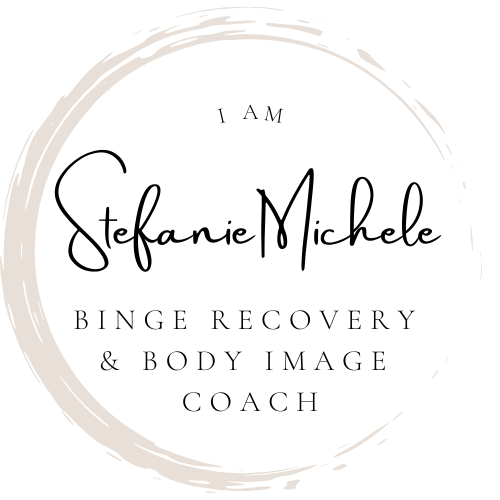Disorganized Attachment & Food
Welcome to the third installment of this four-part series about Attachment Styles — and what they have to do with how we EAT.
If you missed the first two installments, you can find them here and here, respectively.
This week we are looking at disorganized attachment.
(Next week, we will look at the healthy attachment style…because we all need some hope that things can get better.)
But first —what is disorganized attachment?
Disorganized attachment can look like a push-pull dynamic between the anxious and avoidant styles; where there is a leaning in towards relationship, and then a “whoops never mind made a mistake bye!” kind of running away.
This type of attachment develops when the source of safety (OG sense of connection with caregiver) is also the source of fear (it’s not reliable, it’s scary, it’s conditional, it’s absent). And instead of committing to one coping mechanism (anxious coping: I’ll find you, safety, I’ll chase you to the end!) or the other (avoidant coping: eff you safety, don’t need you anyway), we move inconsistently back and forth between the two, toggling in the instability of it all, unable to root anywhere.
I don’t need to explain how THAT might show up through food (but I will) —
In and out, back and forth, hot and cold, binge and restrict.
A disorganized-attachment to food might be hard core restricting for periods of time (minutes, hours, days, weeks, years) and then becoming fearful/doubtful, and moving into the polar opposite.
The amount of chaos here cannot be overstated.
I find that this group often feels unstable in their nervous systems and very confused by the emotional whiplash of it all.
I’m safe, I’m not safe, I’m safe, I’m not safe, I’m safe, I’m not safe.
Binge, restrict, binge, restrict, binge, restrict, binge, restrict.
There is nothing to hold onto for too long, it keeps feeling different, and safety’s face keeps changing. There is nothing to trust. Fear dominates.
(I think the vulnerability here for bulimia is strong as well, as purging is a highly disorganized experience of an act that feels almost violent can also feel safe).
There is also a lack of trust in becoming “normal” around food — like it’s not trusted. The other shoe will drop, it’s not safe to be stable with it.
So if you have a binge/restrict free day — might be better to sabotage it because it’s bound to backfire anyway, let’s get there first.
I want to reinforce that having mood swings and/or going through periods of binge and restrict cycles due to biological reactions to restriction is not necessarily the same thing as disorganizedattachment.
Disorganized behavior with food might look almost like an addiction TO the chaotic nature of diet/binge cycles, a place to play out the roller coaster rather than just riding a roller coaster by accident.
It is characterized by a lot of fear and a lot of inner turmoil. A sense of food being a vortex into chaos that already lives inside.
Many people with histories of abuse and trauma develop disorganizedattachment, but you can also develop this style of attachment in the absence of explicit trauma and abuse.
While the link between eating and attachment is not well studied (these observations come from my own analytic thinking and personal/professional experiences), there are a lot of resources on attachment theory that you can explore if you’re eager to learn more. To start, I recommend listening to and/or reading the work of Diane Poole Heller, including her book The Power of Attachment. I also recommend the book Mother Hunger by Kelly McDaniel.
See next blog for more on Healthy Attachment and how that can support a healthy relationship with food.
